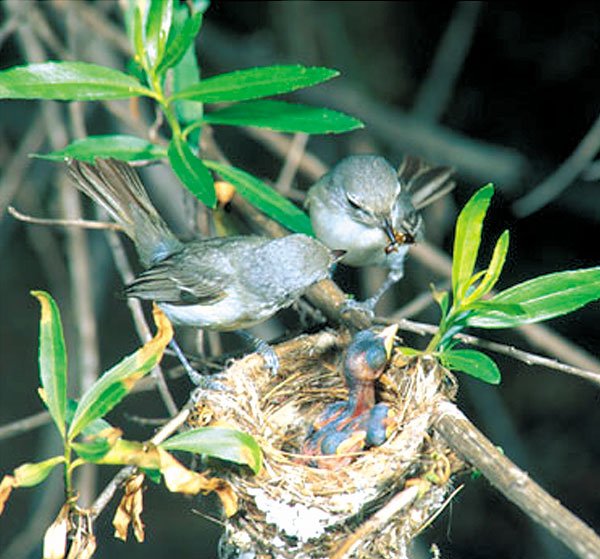Water district unable to clear Llagas Creek of obstructions due
to pair of endangered birds
Gilroy – An endangered bird no larger than a human palm has stalled vital flood-prevention work on Llagas Creek for eight years, according to officials with the Santa Clara Valley Water District.
More accurately, the delays are being caused by two birds – a pair of Least Bell’s Vireo, a small song-bird that resembles a house finch and is listed as a federal endangered species.
Since discovering their nest among willow trees along Llagas Creek in 1997, the water district has been unable to remove sediment, vegetation and other obstructions to water flow along a 3.5-mile stretch of the creek, between Highway 152 and the San Benito County border. Typically, the district performs creek maintenance each year between summer and fall.
“We’re concerned about the flood threat, mostly because of the vegetation growth,” said Marc Klemencic, the agency’s manager for the Llagas and Uvas Creek watershed. “There’s a big flood plain out there called Soap Lake. One of our potential concerns is whether or not there would be a threat to the Gilroy sewage plant. It also could affect farms and homes out there.”
The water district cannot begin creek maintenance until it convinces state and federal officials that it can either preserve the birds’ habitat or replace it elsewhere.
South County lies on the historic fringe of the species’ habitat, which cuts through the southern part of Santa Clara County to the Central Valley, before running south through the state, according to Doug Padley, a wildlife biologist for the water district.
The spill-over of the birds into South County is a byproduct of their resurgent population, now estimated to have reached 1,400 pairs, according to Padley. The birds arrived in South County a few years after the water district completed a levee in the area, though annual inspections since then have only turned up a single bird in the Uvas Creek in 2001.
“In the late ’80s and early ’90s, (the species) was down to about 300 birds,” Padley said. “The management activities that have gone on to bring this bird back have been quite successful. By the middle of the ’90s, until the late ’90s, they were regularly found in San Luis Obispo County. And a lot of birds were found on the Salinas River, and then suddenly they showed up in Llagas Creek.”
The burden of state and federal protection requirements have fallen heaviest on Southern California, which has the largest concentration of Least Bell’s Vireos. But the discovery of two birds in Santa Clara County could spell significant costs for the water district.
Padley said the need to trim vegetation at the base of willow trees poses a “direct conflict” since “that’s where the birds nest.”
Local governments traditionally offset the destruction of vital habitat – known in government parlance as “mitigating impacts” – by creating new habitat, generally at a ratio of three to 10 acres for every acre destroyed.
“It becomes very expensive quickly,” Padley said.
He added, however, that county officials may resolve the issue through a Habitat Conservation Plan, which will designate swaths of county land to replace habitat displaced by development and other activities.
The solutions the water district comes up with will have to pass muster with the California Department of Fish and Game, the Central Coast Regional Water Quality Control Board, and the federal Army Corps of Engineers.
The water district hopes to submit its plans to those agencies as part of an environmental impact report later this year. They hope to receive approval to commence maintenance in Llagas Creek by 2007.
“We’re trying to meet our obligations for flood protection and stream stewardship, and comply with all the statutes and regulations,” Padley said. “It’s a juggling act, but we do have to follow the law.”













